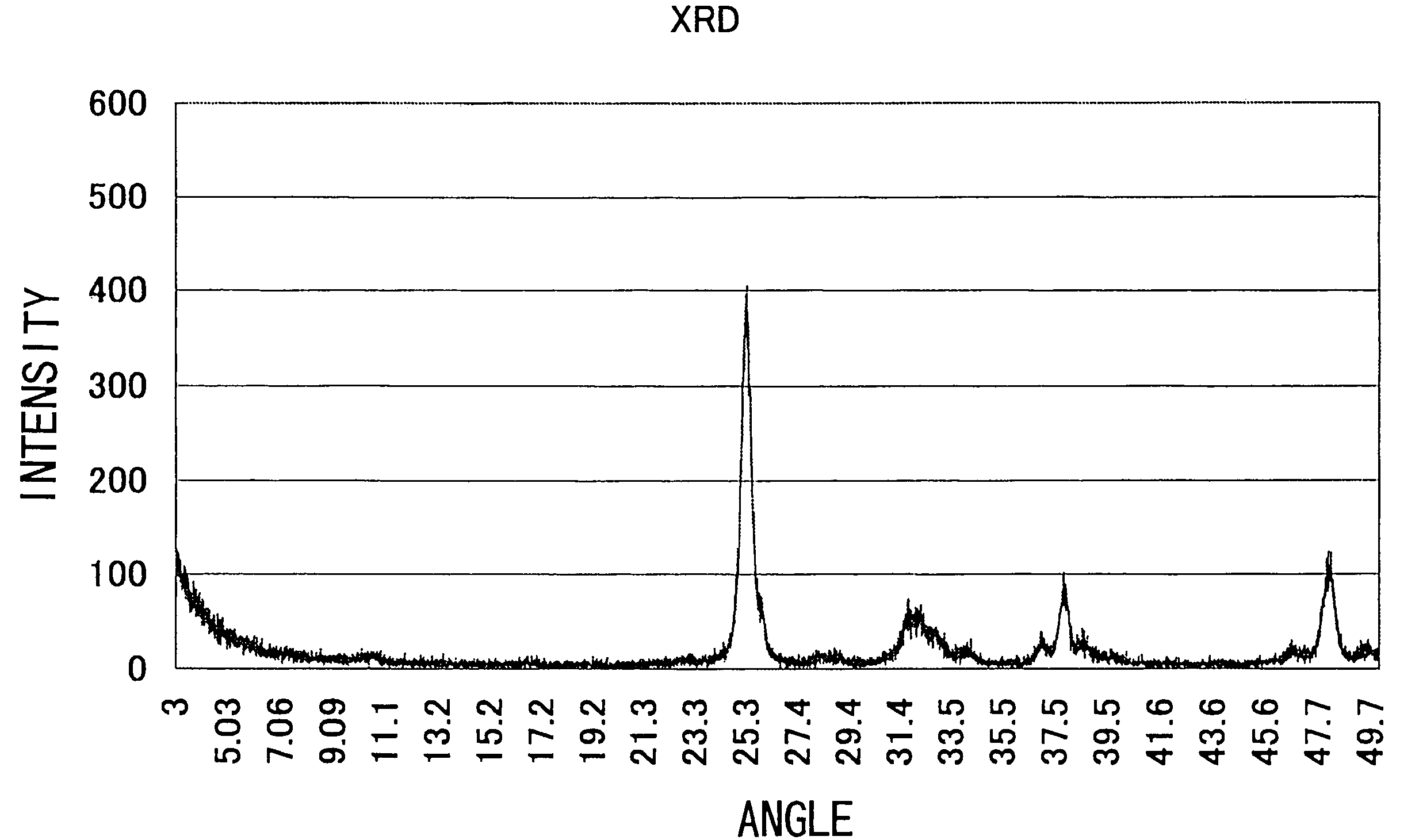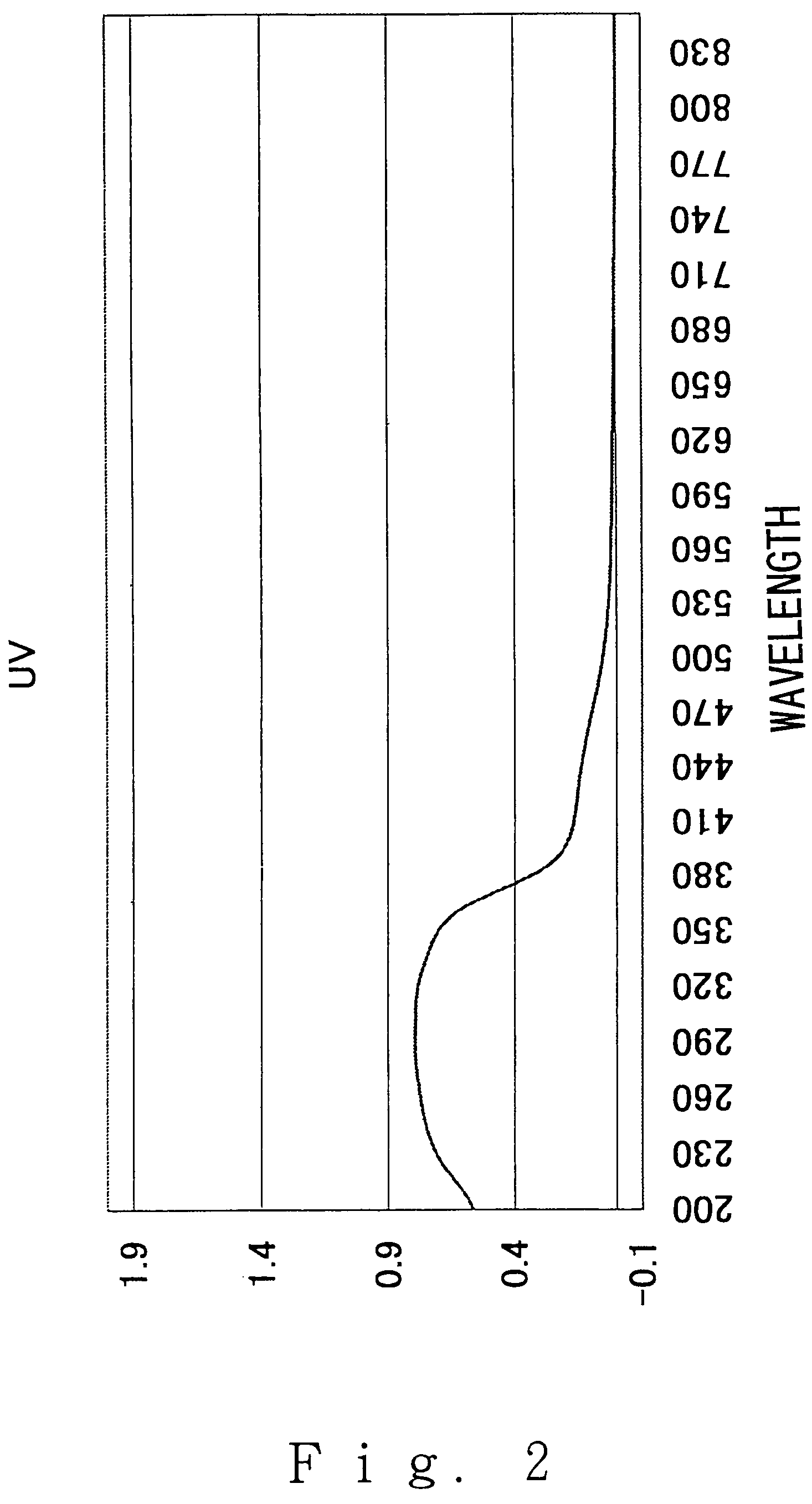Method for producing composite ceramic material
a composite ceramic and manufacturing method technology, applied in the direction of packaging foodstuffs, physical/chemical process catalysts, impression caps, etc., can solve the problems of atopy, other diseases, atopy, and other diseases, and the appearance of buildings, and the deterioration of construction materials
- Summary
- Abstract
- Description
- Claims
- Application Information
AI Technical Summary
Benefits of technology
Problems solved by technology
Method used
Image
Examples
example 1
(1) Manufacturing Method
Process (1)
[0061]900 mg of CaCl2 were dissolved in 1 mL of water (solution 1).
[0062]3 mL of 1 L of an aqueous solution containing 1450 mM of Na+, 42 mM of K+, 1410 mM of Cl−, 80 mM of HCO33−, and 95 mM of HPO4− were added to the solution 1 above (solution 2).
[0063]1 g of TiO2 (anatase 15 nm) was added to this solution and stirred vigorously.
Process (2)
[0064]The solution to which water (50 mL) was immediately added was centrifuged for three minutes at 3000 rpm, and the supernatant was discarded.
[0065]The addition of water and the centrifugation were repeated to remove the ions in the fluid.
(2) Results
[0066]FIG. 1 shows the X-ray diffraction (after apatite precipitation) and FIG. 2 shows the UV to visible absorption spectrum (after apatite precipitation). FIG. 3 shows an electron micrograph. As is clear from these data, the precipitated crystal was apatite having a rod shape.
example 2
(1) Manufacturing Method
Process (1)
[0067]60 mg of CaCl2 and 10 mg of zinc nitrate were dissolved in 1 mL of water (solution 1).
[0068]3 mL of 1 L of an aqueous solution containing 42 mM of K+, 80 mM of HCO33−, and 95 mM of HPO4− were added to solution 1 above (solution 2).
[0069]1 g of TiO2 (anatase 6 nm) was added to this solution and stirred vigorously.
Process (2)
[0070]The solution to which water (50 mL) was immediately added was centrifuged for three minutes at 3000 rpm, and the supernatant was discarded.
[0071]The addition of water and the centrifugation were repeated to remove the ions in the fluid.
[0072]The precipitated crystal was apatite having a rod shape the same as in Example 1 above.
example 3
(1) Manufacturing Method
Process (1)
[0073]1500 mg of CaCl2 were dissolved in 1 mL of water (solution 1).
[0074]1 g of TiO2 (anatase 15 nm) was added to this solution and stirred vigorously.
[0075]3 mL of 1 L of an aqueous solution containing 1450 mM of Na+, 42 mM of K+, 1410 mM of Cl−, 80 mM of HCO33−, and 95 mM of HPO4− were added to solution 1 above (solution 2)
Process (2)
[0076]The solution to which water (50 mL) was immediately added was centrifuged for three minutes at 3000 rpm, and the supernatant was discarded.
[0077]The addition of the water and the centrifugation were repeated to remove the ions in the fluid.
(2) Results
[0078]The precipitated crystal was apatite having a rod shape the same as in Example 1 above.
PUM
| Property | Measurement | Unit |
|---|---|---|
| specific surface area | aaaaa | aaaaa |
| mean particle diameter | aaaaa | aaaaa |
| temperature | aaaaa | aaaaa |
Abstract
Description
Claims
Application Information
 Login to View More
Login to View More - R&D
- Intellectual Property
- Life Sciences
- Materials
- Tech Scout
- Unparalleled Data Quality
- Higher Quality Content
- 60% Fewer Hallucinations
Browse by: Latest US Patents, China's latest patents, Technical Efficacy Thesaurus, Application Domain, Technology Topic, Popular Technical Reports.
© 2025 PatSnap. All rights reserved.Legal|Privacy policy|Modern Slavery Act Transparency Statement|Sitemap|About US| Contact US: help@patsnap.com



